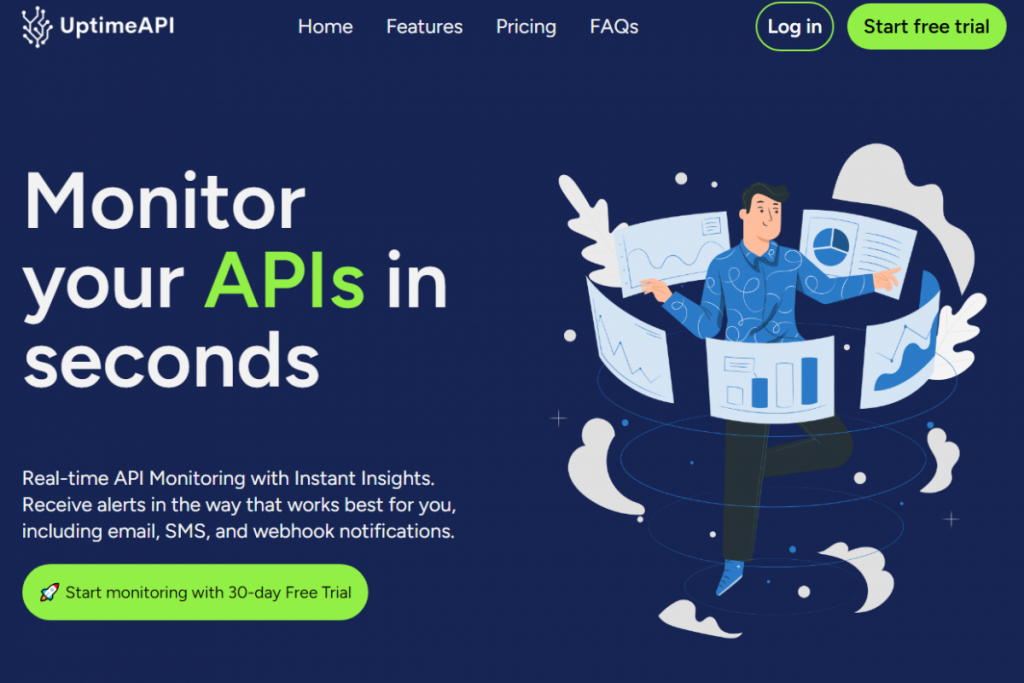Today’s digital services and software development depend heavily on the uptime and dependability of APIs (Application Programming Interfaces). Maintaining seamless business operations and upholding customer trust requires an understanding of downtime and the implementation of efficient API downtime alerts.
Understanding API Downtime Alerts and Its Impact
Definition and significance of API downtime go beyond technical disruptions; they directly affect business continuity and user experience. API downtime refers to periods when an API is unavailable or fails to perform as expected, disrupting data flows and service integrations. Consequences of API downtime on business operations can range from halted transactions to impaired service delivery, impacting revenue and reputation. Financial implications of unreliable API performance can lead to direct losses in sales, penalties for service level agreement (SLA) breaches, and increased operational costs to rectify issues.
Benefits of Implementing It
Putting API Downtime Alerts into place provides proactive ways to reduce risks and maintain operational effectiveness. Continuous monitoring of API health and performance indicators is part of proactive monitoring to reduce downtime because it allows for early issue detection and action. The significance of real-time alerts in identifying problems lies in their ability to enable IT teams and developers to promptly address issues before they worsen, therefore reducing customer discontent and potential attrition.
The reliable integration of API Downtime Alerts into operational workflows is ensured by the adoption of best practices. The proper staff will be swiftly alerted of API availability alert situations if the appropriate alerting mechanisms are chosen, such as email notifications, SMS alerts, or interaction with incident management systems.
Establishing thresholds and notification criteria entails establishing guidelines for reasonable API uptime and response times. When performance deviates from these standards, alerts are set off. The effective handling of API outage problems, with predetermined procedures for troubleshooting and resolution to minimize business damage, is ensured by the integration of alerts into incident response processes.
Uptime API
You can keep an eye on your APIs with Uptime API. It functions by routinely verifying that your APIs are operational and functioning as intended. It’s simple to set up monitors. The target API endpoint URL and the ability to modify the watch’s timeout and interval settings are required in order to set up monitors. Monitoring intervals indicate how frequently an API will do health checks, whereas timeouts indicate how long an API will wait for a response. With these settings, you may tailor monitoring to your requirements and tastes.
You can choose which contacts should receive notifications straight from your API dashboard and set up alerts. You can then inform your team in this manner. You can select the package that best suits your monitoring requirements thanks to its numerous adjustable settings and monitor limits. Additionally, it offers historical data and analytics so you can monitor how API availability and performance have changed over time. Obtain access to your logs so you may investigate any API problems.
Examine historical performance trends and make decisions based on the facts. Alerts can be tailored to your needs in order to minimize interruptions. monitoring APIs in real time with rapid data. Depending on whatever alert delivery method best meets your needs, you can choose between webhooks, SMS, or email notifications.
Related Article: Real Time API Monitoring Tool You Should Know


